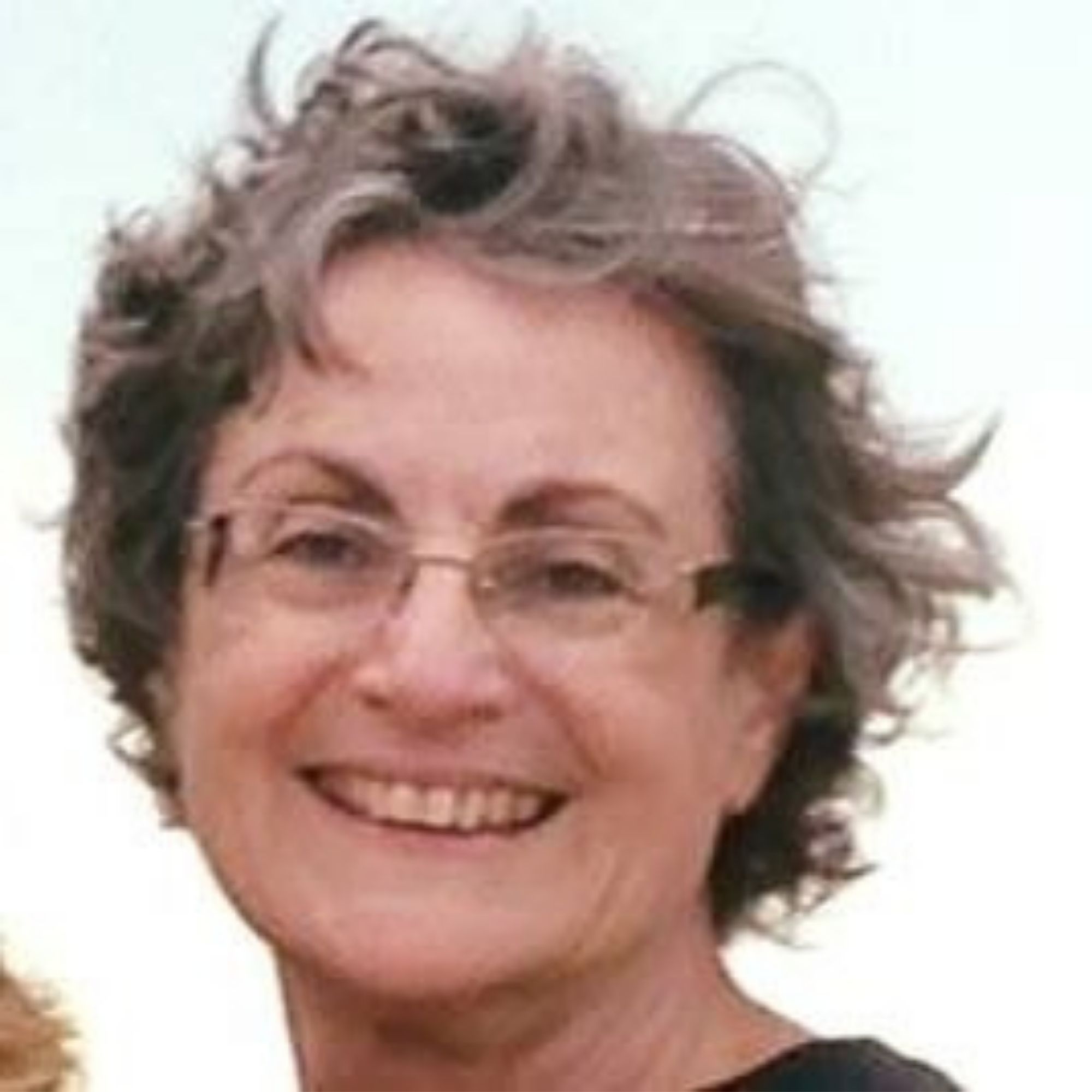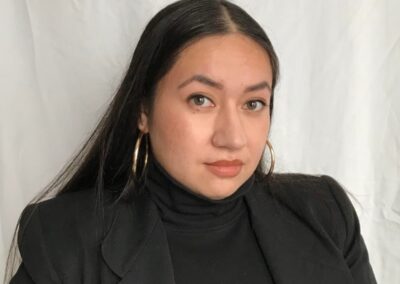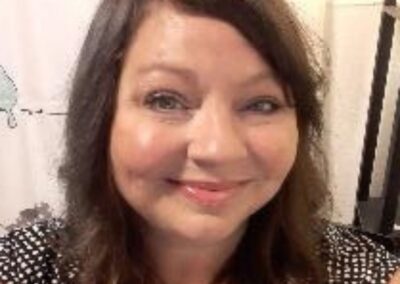She/her
On December 15, 2021, my phone sounded a severe weather alert, and when I turned on my radio to get the latest weather information, I was treated to the surreal experience of hearing, “It’s such lovely weather for a sleigh ride together with you” while I listened to find out whether there were any tornadoes in the area. The unusual December weather patterns that triggered flooding in California, record snowfall in Colorado, and hurricane-force winds across the Kansas plains should lay to rest any thoughts of postponing action to deter and mitigate the effects of climate change. It is already here.
I have had the privilege of participating in the Climate Action Plan project in the capacity of a Community Coordinator to gather input from Lawrence citizens concerning their thoughts and ideas on how best to address climate change. As a senior citizen myself, I was especially interested in collecting the thoughts of older Douglas County residents, who have been studying climate change and ways to address and mitigate its effects for decades. Working on this project, I have had the honor of meeting, interviewing, and collaborating with some amazing people, and this has reinforced in me the belief that Douglas County and the City of Lawrence can be proud of their reputation as forward-thinking leaders who meet challenges head-on. That’s what makes me feel so honored to be a part of this community.
I would have liked to have gathered more information on the ways USD 497 is teaching our children about climate change, because so many of the people I talked with said that educating them about how to deal with climate change is essential, but a lack of time and opportunity prevented me from doing much in this area. I have compiled, as a summary, a list of suggestions and recommendations that were recurring themes, including the impact that climate change is having on individuals and the community, ways to combat climate change, and specific things that citizens and the city and county can do to address this.
Impact of Climate Change on Local Citizens
- Concern for friends and relatives living elsewhere (fires, floods, hurricanes, etc.)
- Economic concerns (expenses such as utility bills, health bills, etc.)
- Fewer opportunities to exercise outdoors due to heat, chiggers, tick-borne diseases, heat stroke, lung problems and allergies
Negative Emotional Reactions
- Grief at losing thousands of animal species
- Apathy from trying to address climate change for years without seeing progress
- Stress at contemplating what impact this will have on the younger generations
- Depression because, with COVID, it is harder to get out and do something
Optimism because:
- We were able to overcome the human-induced droughts and dust storms of the 1930s
- We have some time to address and mitigate the effects of climate change
- Clean energy is gaining momentum
- Companies are investing more in clean energy
- The younger generation will support climate change mitigation
- Colleges and universities are divesting from fossil fuel interests
- We don’t have the option of giving up
Evidence of Climate Change
- Extremes of temperatures
- Strange weather events
- Drought
- Deluges
- Stronger, slower-moving hurricanes
- The growing season is already two weeks earlier in the spring and two weeks later in the fall
Collaboration
- Get more people concerned and involved
- Bring in more young people
- Connect people with nature
- Get churches involved
- Communicate openly with the public
- Don’t get stuck on arguing finer points
- Get people with differing views to come together and find solutions
- Change individuals’ way of thinking and doing
- Change our idea of lawn esthetics
- Use sustainable, native plants and pollinator flowers and have less lawn to mow
- Reduce overconsumption
- Increase respect for natural resources
- Examine what we buy for our homes, what we drive, and other economic choices
- Be motivated and organize to motivate others
- Learn to live with less, scale back, bite the bullet
- Conserve energy by using less of it
- Invest in companies that don’t use fossil fuels
- Reduce radical individualism and encourage community
- Rethink what real progress is
- Walk, cycle, ride the bus
- Eat locally grown foods
Educate young people
- Build solar plants and involve high school students
- Work nature preservation into all areas of curriculum, including science, art, math, and technology
- Get kids outside and teach them about nature
- Teach children about plants and how climate change impacts plants, animals, and seasons
- Encourage environmental clubs
- Teach students about solar energy in class
- Provide hands-on experience in shop classes
Food and Agricultural Practices
- Eat locally
- Don’t waste energy trying to support non-native plants
- Create natural habitat buffers instead of cement liners for creeks
- Get rid of invasive species, including honeysuckle
- Focus on land and regional food hubs and eliminate current food distribution practices that rely heavily on fossil fuels
- Plant gardens
- Protect native habitat, prairies, and forests
- Restore green spaces, connect them together, and provide buffers for them
- Change the way we grow commodity foods, the way we use pesticides, herbicides and practices that threaten pollinators
- Restore prairies, with eye on how plants are migrating north following climate patterns
- Encourage the use of native plants
- Plant native grasses and butterfly gardens, and reduce mowing
- Create food hubs made up of local and regional networks
- Practice regenerative agriculture that improves soil, which absorbs CO2, and encourages healthy plant growth that further reduces CO2
- Add green corridors with native plants
- Use chemicals as a last resort
Social Justice
- Provide acceptable housing/shelters for the homeless
- Ensure that all homes have storm shelters
- Provide the means for low-income people to insulate their homes
- Help low-income people with higher utility bills
- Put local people to work weatherizing houses
- Take a closer look at how fossil fuel emissions are located closer to low-income communities and legislate change
- Deal with standing water and the insects it produces
Reducing CO2 Emissions
- Encourage multi-modal transportation, including more mass transit, cycling, and walking
- Include more bus stops and shelters
- Make bike lanes safer
- Increase the use of solar farms and wind farms without disturbing existing green spaces
- Promote bus ridership
- Use electric busses, preferably solar based
- Increase storage capacity of batteries
- Transition away from fossil fuels and increase roof-top solar energy
City/State Planning and Codes
- Eliminate use of plastic bags
- Encourage houses with windows on the south side and thicker walls to insulate
- Encourage people to plant food in their yards and do away with conventional lawns and chemicals
- Make it legal to collect rainwater
- Encourage infill and eliminate sprawl
- Ensure 2040 Comprehensive Plan keeps climate change at top of list of considerations
- Create better building codes and energy-efficient homes
- Use grants to encourage people to be innovative for the benefit of the community
- Plan houses in a way that makes it easy to shut off unused living spaces without breaking water pipes
- Make it easier to have co-op housing, or more than three unrelated people living in one house
- Encourage smaller houses
- Enforce better control of auto emissions
- Don’t build in floodplains
- Consider no-growth policies
- Create water plans to save aquifer, rivers, and lakes
- Use forward thinking to reduce traffic
- Provide for grocery store to serve Downtown, East and Northeast Lawrence
- Create neighborhoods where people can walk to do shopping
- Scatter smaller markets across town instead of big box stores
- Instead of thinking Big is Beautiful, change mindset to Small is Beautiful: smaller homes, less suburban sprawl





